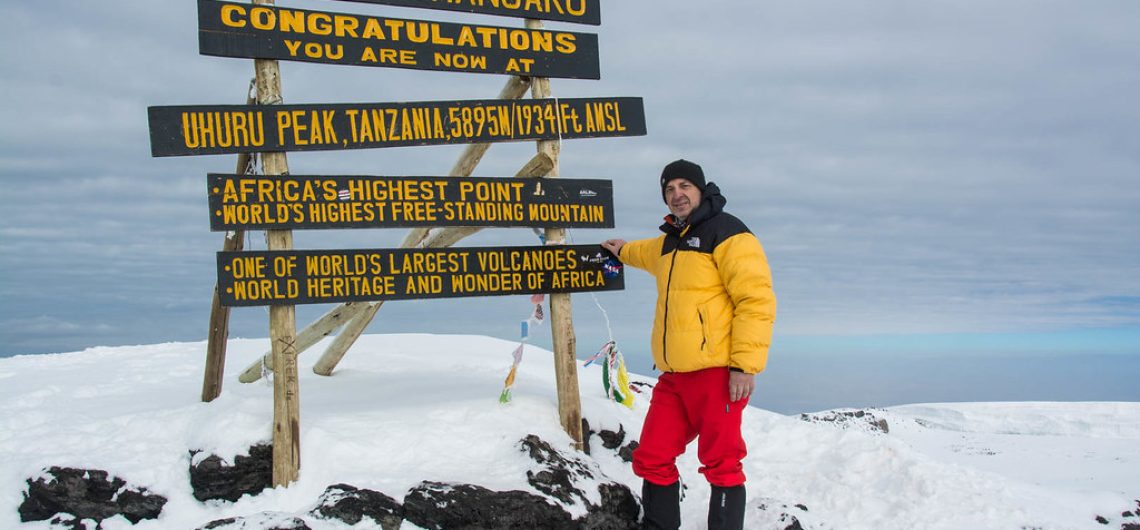Are you an adventure seeker looking for an unforgettable experience? Look no further than Mount Kilimanjaro, also known as “Africa’s Rooftop.” At 19,341 feet, this dormant volcano is the highest peak on the African continent and a must-visit destination for thrill-seekers and nature enthusiasts alike. In this ultimate guide, we’ll cover everything you need to know to plan your trip and conquer Africa’s Rooftop.
Introduction
Located in Tanzania, Mount Kilimanjaro has been a popular destination for adventurers since the 19th century. This UNESCO World Heritage Site is known for its stunning views, diverse wildlife, and challenging climb. Whether you’re an experienced mountaineer or a first-time hiker, climbing Kilimanjaro is an adventure you won’t forget.
Why is Kilimanjaro nicknamed Africa’s Rooftop?
Some interesting facts about Mount Kilimanjaro
Before we dive into the nitty-gritty of climbing Africa’s Rooftop, here are a few interesting facts about Mount Kilimanjaro:
- Kilimanjaro is the tallest freestanding mountain in the world
- The mountain has three distinct volcanic cones: Kibo, Mawenzi, and Shira
- The youngest volcanic cone, Kibo, is where the highest peak, Uhuru Peak, is located
- Mount Kilimanjaro is home to five different ecological zones, each with its own unique flora and fauna
Planning Your Trip to Africa’s Rooftop
Before you embark on your climb, there are a few things you need to consider to ensure a successful and enjoyable trip.
Best time to climb Kilimanjaro
The best time to climb Kilimanjaro is during the dry season, which runs from late June to October and from December to February. During these months, the weather is clear and dry, making for ideal climbing conditions.
Choosing a route
There are several different routes up Kilimanjaro, each with its own unique features and challenges. The most popular routes are the Marangu, Machame, and Lemosho routes. The Marangu route, also known as the “Coca-Cola” route, is the shortest and easiest route but also the most crowded. The Machame and Lemosho routes are more challenging but offer more scenic views and fewer crowds.
Fitness and training
Climbing Kilimanjaro is a challenging physical feat, and it’s important to be in good physical shape before attempting the climb. It’s recommended to do cardiovascular exercises such as running or cycling, as well as strength training to prepare for the climb. Additionally, it’s recommended to do some high-altitude hiking or training to acclimate to the altitude.
Booking a tour operator
To climb Kilimanjaro, you must book a tour operator. It’s important to choose a reputable operator with experienced guides and good safety records. Research different operators and read reviews before making your choice.
Acclimating to altitude
One of the biggest challenges of climbing Kilimanjaro is the high altitude. It’s important to acclimate slowly to reduce the risk of altitude sickness. The best way to do this is to choose a route with a longer duration and to take frequent breaks and rest days. Additionally, it’s important to stay hydrated and to eat a balanced diet to fuel your climb.
Climbing Africa’s Rooftop: What to Expect
Now that you’ve planned your trip, it’s time to climb Africa’s Rooftop. Here’s what you can expect on your climb.
Day 1: Starting the climb
On the first day of your climb, you’ll start at the base of the mountain and hike through the rainforest. The hike is relatively easy, and you’ll have the chance to see some of the mountain’s wildlife, such as colobus monkeys and blue monkeys.
Day 2-4: Climbing higher
Over the next few days, you’ll climb higher and higher, passing through different ecological zones. The hike becomes more challenging as you gain altitude, but the views become more stunning.
Day 5-6: Summit push
The final push to the summit starts on the fifth day of the climb. You’ll wake up early in the morning and start hiking in the dark to reach the summit for sunrise. The hike is challenging and steep, but the views from the summit are breathtaking.
Descending the mountain
After reaching the summit, you’ll start your descent back down the mountain. The descent can be challenging on your knees and joints, so it’s important to take it slow and use trekking poles if needed.
FAQs
- Is it safe to climb Kilimanjaro? Yes, it’s safe to climb Kilimanjaro as long as you choose a reputable tour operator and follow their safety guidelines.
- How difficult is the climb? The climb is challenging, but it’s doable for people of all fitness levels with proper training and preparation.
- What should I pack for the climb? You should pack warm and waterproof clothing, sturdy hiking boots, a sleeping bag, and a headlamp, among other items. Your tour operator will provide a detailed packing list.
- Do I need a visa to climb Kilimanjaro? Yes, you’ll need a tourist visa to enter Tanzania. You can obtain a visa on arrival at the airport or apply for one in advance.
- Can I climb Kilimanjaro solo? No, you must climb Kilimanjaro with a tour operator.
- What’s the best time of year to climb Kilimanjaro? The best time to climb Kilimanjaro is during the dry season, which runs from late June to October and from December to February.
Conclusion
Climbing Mount Kilimanjaro, also known as Africa’s Rooftop, is a challenging and rewarding adventure that offers stunning views and unique wildlife. With proper planning and preparation, anyone can conquer this iconic mountain. So what are you waiting for?
![]()


Comments